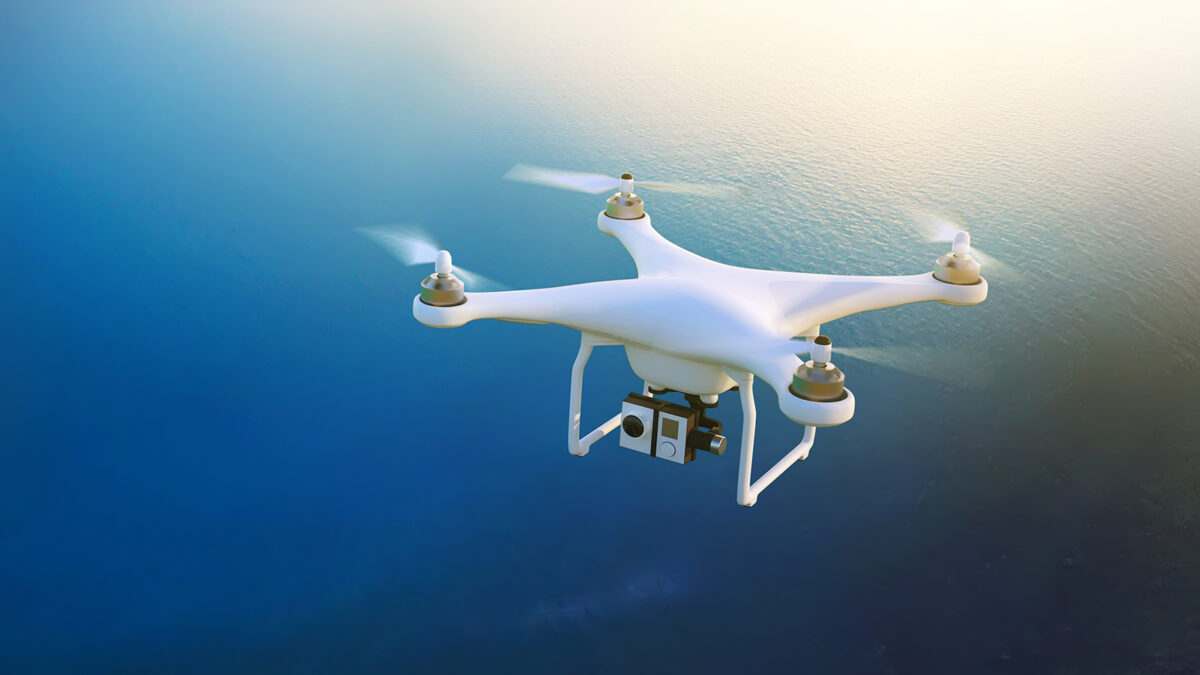White paper offers advice to FAA about how to ‘turbocharge’ growth of drone services
By Paul Brinkmann|July 7, 2023
Iridium argues that adding satcom to terrestrial communications can solve control of drones beyond visual line of sight
When Iridium Communications executive John Peterson is out talking to drone entrepreneurs, he hears stories about their business plans being delayed or dashed altogether by the long, daunting process of earning a waiver from FAA permitting pilots to fly aircraft beyond the visual line of sight.
To avoid collisions with passenger aircraft, buildings or power lines, FAA requires a licensed “remote pilot in command” to keep the drone in sight, unless a waiver is granted for BVLOS (beyond visual line of sight) operations. FAA has granted 201 such waivers since 2019, including some for such services as package delivery, pipeline monitoring and aerial mapping.
In one sense, it should be easier to get such a waiver for BVLOS flights over rural areas, since there are fewer people, but it can be difficult to earn one due to the sparse communications infrastructure. As Iridium puts it in a June white paper, widespread adoption of drone services has been “hindered by the lack of terrestrial connectivity in rural and remote areas,” and “modern-day satellite communications solutions can turbocharge adoption.”
“One of the biggest problems [entrepreneurs] have is getting permission to fly meaningfully. You can only do so much work in line of sight to get to where we want to go as an industry and get these aircraft truly autonomous,” says Peterson, Iridium’s executive director for aviation, referencing the goal of someday normalizing BVLOS flight in appropriate areas of the National Airspace System.
Peterson spearheaded a study that culminated in the release of the white paper, “Monitored BVLOS: A New Model for UAS [Uncrewed Aircraft System] Integration in the National Airspace System.” The study included a flight demonstration of satellite-based BVLOS over agricultural land in Bakersfield, California.
What’s needed, according to Iridium, is a set of commercial-off-the-shelf communications technology, including some for satellite communications. Iridium’s proposed “minimum equipment list” includes a transponder to send Automatic Dependent Surveillance-Broadcast identification and location transmissions up to Iridium’s satellites in low-Earth orbit, which would route the information to the remote pilots. With situational awareness provided by ADS-B and terrestrial networks, the pilots would control their aircraft (eventually more than one) by sending commands to them over Iridium’s satellites.
During the Bakersfield flight, a pilot from American Aerospace Technologies, a Pennsylvania drone manufacturer, flew one of the company’s AiRanger pipeline inspection drones from a trailer. Line of sight was maintained on takeoff and during the climb, followed by BVLOS as the 100-kilogram aircraft flew a rectangular pattern and demonstrated “evasive maneuvers.” Line of sight was restored during the approach and landing. Iridium concluded that the off-the-shelf technology permitted adequate BVLOS monitoring by the remote pilot, and that the technology maneuvered the aircraft “to maintain safe separation over an L-band satellite communication link.”
The white paper also suggests that FAA streamline the form that those seeking a BVLOS waiver must fill out. The proposed new form includes Iridium’s suggested minimum equipment list and a checklist of six potential radio frequencies that could be used to provide BVLOS command and control connectivity, one of which is the L-band that Iridium relies on.
Iridium believes these changes would help increase the number of operators who earn a waiver, and these additional waivers would “let the FAA have a good functioning baseline” about the performance of satcom and the other proposed technologies, says Peterson. With such a baseline, FAA could be assured that pilots have control over their aircraft and that their aircraft maintain safe separation, he says.
Iridium’s white paper could have an impact on more than just drones, Peterson notes. That’s because many companies developing electric air taxis eventually believe such passenger aircraft will have to fly BVLOS for their business models to succeed.
In a written response to questions about Iridium’s recommendations, FAA said, “We don’t have anything to offer on the Iridium white paper. We also don’t have plans to change the waiver application form.”
FAA has sought public feedback on four requests for BVLOS waivers that are currently pending and for which it “expects to make a decision this summer.”
Those requests are from United Parcel Service Flight Forward, California drone operator Zipline, Florida drone services company Phoenix Air Unmanned, and Montana-based avionics company uAvionix, which are companies that plan to fly pilot projects to demonstrate delivery services. Peterson said he is monitoring those companies’ waiver applications and that some of their proposals rely on Iridium satellite connections to provide BVLOS communications, but he declined to discuss specific proposals.
FAA is focused on developing a standard set of rules for BVLOS operations to make them “routine, scalable and economically viable,” with an ultimate goal to “fully integrate drones into the National Airspace System”, the agency said in its written response.
To that end, the agency noted that it chartered a BVLOS rulemaking committee in 2021 to provide safety recommendations, and that it is still reviewing the final report from that committee, a 381-page document published on the agency’s website in March 2022.
Related Topics
Avionics and Electronics
Get the latest news about advanced air mobility delivered to your inbox every two weeks.





